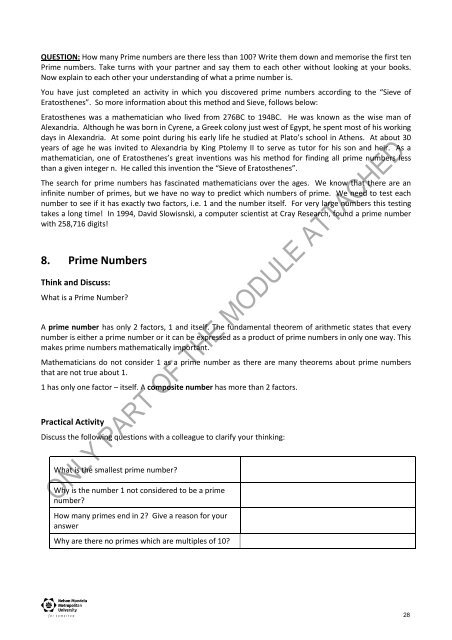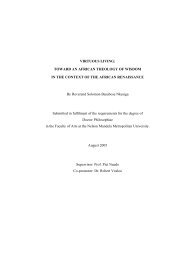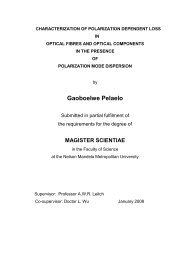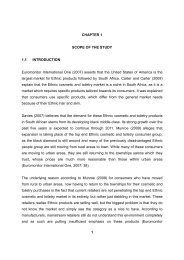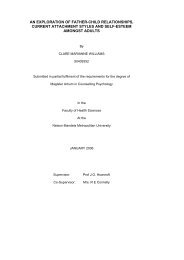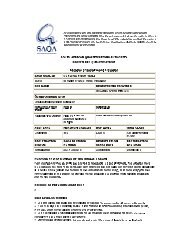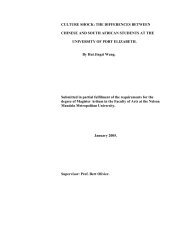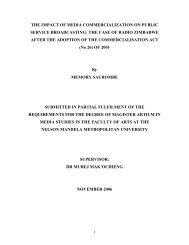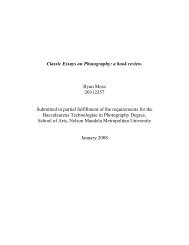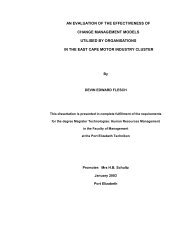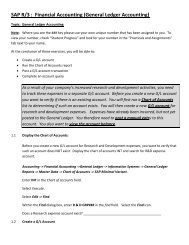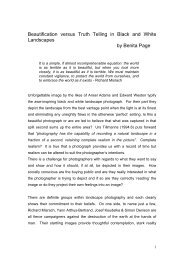concepts and methodology in mathematics education - Nelson ...
concepts and methodology in mathematics education - Nelson ...
concepts and methodology in mathematics education - Nelson ...
Create successful ePaper yourself
Turn your PDF publications into a flip-book with our unique Google optimized e-Paper software.
QUESTION: How many Prime numbers are there less than 100? Write them down <strong>and</strong> memorise the first tenPrime numbers. Take turns with your partner <strong>and</strong> say them to each other without look<strong>in</strong>g at your books.Now expla<strong>in</strong> to each other your underst<strong>and</strong><strong>in</strong>g of what a prime number is.You have just completed an activity <strong>in</strong> which you discovered prime numbers accord<strong>in</strong>g to the “Sieve ofEratosthenes”. So more <strong>in</strong>formation about this method <strong>and</strong> Sieve, follows below:Eratosthenes was a mathematician who lived from 276BC to 194BC. He was known as the wise man ofAlex<strong>and</strong>ria. Although he was born <strong>in</strong> Cyrene, a Greek colony just west of Egypt, he spent most of his work<strong>in</strong>gdays <strong>in</strong> Alex<strong>and</strong>ria. At some po<strong>in</strong>t dur<strong>in</strong>g his early life he studied at Plato’s school <strong>in</strong> Athens. At about 30years of age he was <strong>in</strong>vited to Alex<strong>and</strong>ria by K<strong>in</strong>g Ptolemy II to serve as tutor for his son <strong>and</strong> heir. As amathematician, one of Eratosthenes’s great <strong>in</strong>ventions was his method for f<strong>in</strong>d<strong>in</strong>g all prime numbers lessthan a given <strong>in</strong>teger n. He called this <strong>in</strong>vention the “Sieve of Eratosthenes”.The search for prime numbers has fasc<strong>in</strong>ated mathematicians over the ages. We know that there are an<strong>in</strong>f<strong>in</strong>ite number of primes, but we have no way to predict which numbers of prime. We need to test eachnumber to see if it has exactly two factors, i.e. 1 <strong>and</strong> the number itself. For very large numbers this test<strong>in</strong>gtakes a long time! In 1994, David Slowisnski, a computer scientist at Cray Research, found a prime numberwith 258,716 digits!8. Prime NumbersTh<strong>in</strong>k <strong>and</strong> Discuss:What is a Prime Number?A prime number has only 2 factors, 1 <strong>and</strong> itself. The fundamental theorem of arithmetic states that everynumber is either a prime number or it can be expressed as a product of prime numbers <strong>in</strong> only one way. Thismakes prime numbers mathematically important.Mathematicians do not consider 1 as a prime number as there are many theorems about prime numbersthat are not true about 1.1 has only one factor – itself. A composite number has more than 2 factors.Practical ActivityDiscuss the follow<strong>in</strong>g questions with a colleague to clarify your th<strong>in</strong>k<strong>in</strong>g:What is the smallest prime number?Why is the number 1 not considered to be a primenumber?How many primes end <strong>in</strong> 2? Give a reason for youranswerWhy are there no primes which are multiples of 10?28


